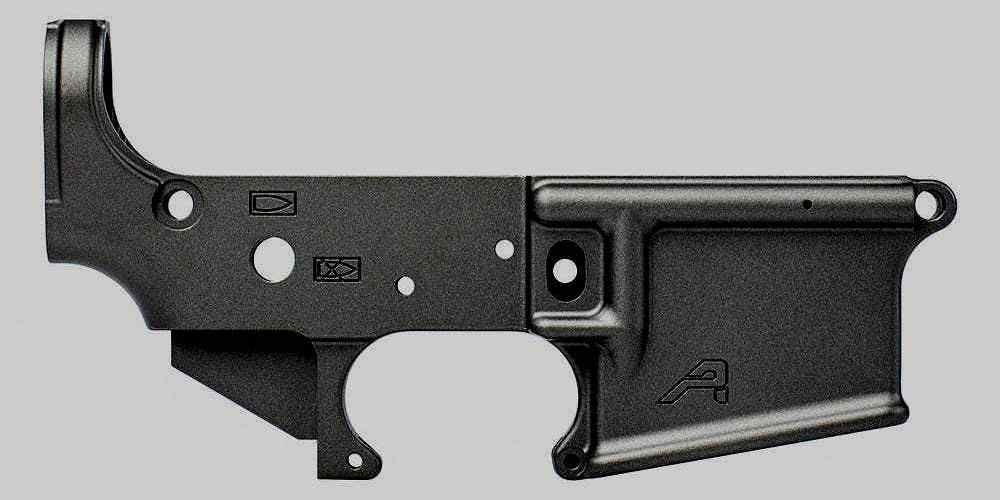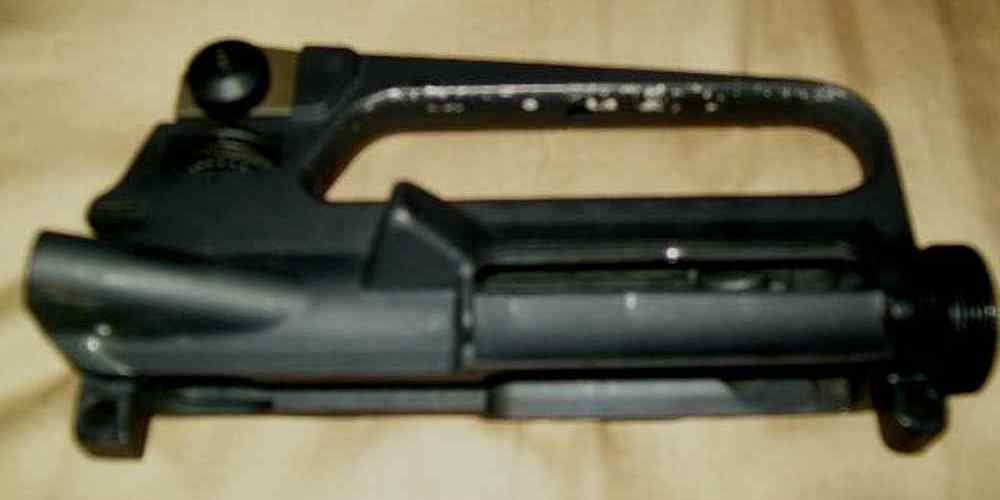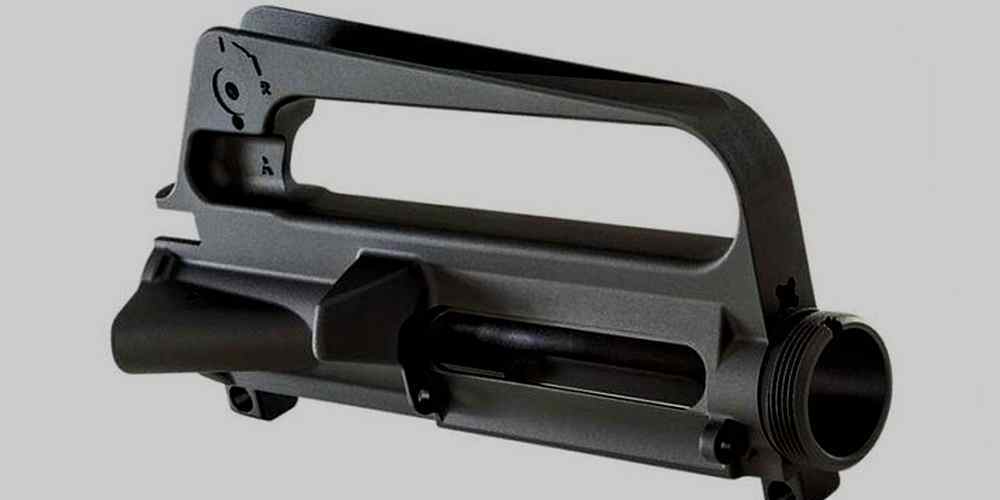“Stay cool under pressure with our thermal management solutions for your AR15 upper.”
Importance of Proper Thermal Management in AR15 Uppers
When it comes to owning and operating an AR15, proper thermal management is crucial to ensuring the longevity and performance of your firearm. The AR15 upper, in particular, is a critical component that can generate a significant amount of heat during extended firing sessions. Without proper thermal management, this heat can lead to decreased accuracy, increased wear and tear on your firearm, and even potential safety hazards.
One of the key reasons why thermal management is so important for AR15 uppers is the potential for overheating. As you fire your AR15, the barrel and other components in the upper assembly can reach extremely high temperatures. This heat can cause the metal to expand, affecting the fit and function of your firearm. In extreme cases, overheating can even lead to catastrophic failure, putting you and those around you at risk.
Proper thermal management can help dissipate this heat and keep your AR15 upper running smoothly. One of the most common methods of thermal management is the use of heat sinks or heat shields. These devices are designed to absorb and dissipate heat away from critical components, helping to maintain a safe operating temperature for your firearm.
Another important aspect of thermal management for AR15 uppers is proper ventilation. Adequate airflow around the barrel and other components can help to carry heat away from the firearm, preventing it from building up and causing damage. This can be achieved through the use of vented handguards, muzzle devices, and other accessories that promote air circulation.
In addition to preventing overheating, proper thermal management can also help to improve the accuracy and consistency of your AR15. As the barrel heats up during firing, it can start to warp and flex, affecting the trajectory of your shots. By keeping your AR15 upper cool, you can maintain a more consistent point of impact and ensure that your shots stay on target.
Proper thermal management can also help to extend the life of your AR15 upper and reduce the need for costly repairs or replacements. Excessive heat can cause metal components to wear out more quickly, leading to increased maintenance and potential malfunctions. By investing in thermal management solutions, you can help to protect your investment and keep your AR15 running smoothly for years to come.
In conclusion, proper thermal management is essential for keeping your AR15 upper cool under fire. By dissipating heat, promoting airflow, and maintaining a safe operating temperature, you can improve the performance, accuracy, and longevity of your firearm. Whether you’re a seasoned shooter or a novice gun owner, investing in thermal management solutions is a smart choice that will pay off in the long run. So don’t let your AR15 overheat – take the necessary steps to keep it cool and firing smoothly.
Best Cooling Solutions for AR15 Uppers
When it comes to shooting your AR15, one of the most important factors to consider is thermal management. As you fire round after round, the heat generated can quickly build up in your upper receiver, potentially causing malfunctions or even damage to your rifle. That’s why it’s crucial to have effective cooling solutions in place to keep your AR15 running smoothly under fire.

One of the simplest and most cost-effective ways to keep your AR15 upper cool is to use a heat-resistant handguard. These handguards are designed to dissipate heat quickly, helping to prevent the upper receiver from overheating during extended shooting sessions. Look for handguards made from materials like aluminum or carbon fiber, which are known for their excellent heat resistance properties.
Another popular cooling solution for AR15 uppers is the use of heat sinks. These small metal devices attach to the barrel of your rifle and help to draw heat away from the upper receiver, keeping it cool even during rapid fire. Heat sinks are lightweight and easy to install, making them a convenient option for shooters looking to improve their thermal management.
For those looking for a more advanced cooling solution, consider investing in a thermal management system. These systems typically consist of a combination of heat sinks, fans, and other cooling components that work together to regulate the temperature of your AR15 upper. While these systems can be more expensive than other cooling solutions, they offer superior performance and can help to extend the life of your rifle.
If you’re on a budget or simply prefer a DIY approach, there are also some simple tricks you can use to help keep your AR15 upper cool. One common method is to use a heat-resistant spray or tape on the barrel of your rifle. These products are designed to reflect heat away from the upper receiver, helping to reduce the overall temperature of your rifle during use.
In addition to using cooling solutions, it’s also important to practice proper shooting techniques to help manage heat buildup in your AR15 upper. Avoid firing your rifle in rapid succession for extended periods of time, as this can quickly lead to overheating. Instead, take breaks between shots to allow your rifle to cool down and prevent damage.
In conclusion, thermal management is a critical aspect of maintaining the performance and longevity of your AR15 upper. By investing in effective cooling solutions, practicing proper shooting techniques, and taking care to monitor the temperature of your rifle during use, you can ensure that your AR15 stays cool under fire. Whether you opt for a heat-resistant handguard, heat sinks, a thermal management system, or simple DIY tricks, keeping your AR15 upper cool will help you shoot more accurately and enjoy your rifle for years to come.
Common Thermal Issues in AR15 Uppers and How to Address Them
When it comes to shooting your AR15, one of the most important factors to consider is thermal management. The heat generated during rapid fire can have a significant impact on the performance and longevity of your upper receiver. In this article, we will discuss some common thermal issues that AR15 owners face and provide some tips on how to address them.
One of the most common thermal issues that AR15 owners face is barrel overheating. When you fire multiple rounds in quick succession, the barrel can heat up rapidly, affecting accuracy and potentially causing damage to the barrel itself. To address this issue, it is important to allow the barrel to cool down between shooting sessions. This can be done by taking breaks during shooting sessions or using a barrel cooler to help dissipate heat more quickly.
Another common thermal issue in AR15 uppers is handguard overheating. The handguard is the part of the upper receiver that surrounds the barrel and is often made of aluminum or polymer. When the handguard heats up, it can become uncomfortable to hold and may even affect the performance of the rifle. To address this issue, consider using a handguard with heat-resistant materials or adding a heat shield to your existing handguard.
In addition to barrel and handguard overheating, another thermal issue that AR15 owners may face is gas tube overheating. The gas tube is responsible for directing gas from the barrel to the bolt carrier group, and when it overheats, it can affect the cycling of the rifle. To address this issue, consider using a low-profile gas block or a gas tube with a larger diameter to help dissipate heat more effectively.
One final thermal issue to consider is optic overheating. If you have a scope or other optic mounted on your AR15, it is important to ensure that it does not overheat during shooting sessions. Optics can be sensitive to heat and may become distorted or damaged if exposed to high temperatures for extended periods. To address this issue, consider using a scope with a heat-resistant coating or adding a heat shield to protect your optic from excessive heat.
In conclusion, thermal management is a critical aspect of maintaining the performance and longevity of your AR15 upper receiver. By addressing common thermal issues such as barrel overheating, handguard overheating, gas tube overheating, and optic overheating, you can ensure that your rifle performs at its best during shooting sessions. Remember to allow your rifle to cool down between shooting sessions and consider using heat-resistant materials or heat shields to protect your rifle from excessive heat. With proper thermal management, you can keep your AR15 upper cool under fire and enjoy reliable performance for years to come.
Tips for Maintaining Optimal Temperature Levels in AR15 Uppers
When it comes to shooting your AR15, one of the most important factors to consider is thermal management. Keeping your AR15 upper cool under fire is crucial for maintaining optimal performance and accuracy. In this article, we will discuss some tips for ensuring that your AR15 upper stays at the right temperature during extended shooting sessions.
One of the first things to consider when it comes to thermal management is the type of ammunition you are using. Different types of ammunition generate different levels of heat when fired, so it is important to choose the right ammo for your shooting needs. Using high-quality, low-heat ammunition can help reduce the overall temperature of your AR15 upper during use.
Another important factor to consider is the rate of fire. Rapid firing can generate a significant amount of heat in a short period of time, which can quickly raise the temperature of your AR15 upper. To combat this, try to pace your shots and avoid rapid firing for extended periods. This will help prevent your AR15 upper from overheating and potentially causing damage.
Proper ventilation is also key to keeping your AR15 upper cool under fire. Make sure that your rifle is equipped with a good quality handguard that allows for adequate airflow around the barrel. Additionally, consider adding a heat shield or other thermal management device to help dissipate heat more effectively. This will help prevent your AR15 upper from becoming too hot during use.
Regular maintenance is another important aspect of thermal management for your AR15 upper. Make sure to clean your rifle regularly to remove any carbon buildup or debris that could impede airflow and cause overheating. Additionally, check for any signs of wear or damage that could affect the performance of your AR15 upper. By keeping your rifle in good condition, you can help ensure that it stays cool under fire.
In addition to these tips, there are a few other things you can do to help keep your AR15 upper cool during use. Consider using a shooting mat or other heat-resistant surface to help dissipate heat away from your rifle. Additionally, take breaks between shooting sessions to allow your AR15 upper to cool down naturally. This will help prevent overheating and ensure that your rifle continues to perform at its best.
In conclusion, thermal management is an important aspect of maintaining optimal performance in your AR15 upper. By choosing the right ammunition, pacing your shots, ensuring proper ventilation, and regularly maintaining your rifle, you can help keep your AR15 upper cool under fire. Remember to take breaks between shooting sessions and use heat-resistant surfaces to help dissipate heat away from your rifle. By following these tips, you can ensure that your AR15 upper stays at the right temperature and continues to perform at its best.
How Thermal Management Impacts Performance and Longevity of AR15 Uppers
When it comes to owning and operating an AR15, one of the key factors that can greatly impact its performance and longevity is thermal management. The AR15 is a popular choice among gun enthusiasts for its versatility, accuracy, and reliability. However, like any firearm, it can be prone to overheating during extended use, which can lead to a decrease in accuracy and potentially damage the upper receiver.
Thermal management refers to the process of dissipating heat generated during firing to prevent overheating and maintain optimal performance. This is especially important for AR15 uppers, which house critical components such as the barrel, bolt carrier group, and gas system. These components can generate a significant amount of heat during rapid fire or sustained shooting, which can affect accuracy and reliability if not properly managed.
One of the most common methods of thermal management for AR15 uppers is the use of heat-resistant materials and coatings. Many manufacturers offer uppers made from materials such as aluminum, which has excellent heat dissipation properties. Additionally, some uppers are coated with heat-resistant finishes such as Cerakote, which can help protect the upper from heat damage and corrosion.
Another important aspect of thermal management for AR15 uppers is proper ventilation. Adequate airflow around the barrel and gas system can help dissipate heat more effectively, preventing overheating and maintaining optimal performance. Some uppers feature vented handguards or barrel designs that promote airflow, while others may require the use of aftermarket accessories such as heat shields or handguard rails.
In addition to materials and ventilation, proper maintenance and cleaning are also essential for managing heat in AR15 uppers. Carbon buildup from firing can insulate critical components and trap heat, leading to increased wear and potential malfunctions. Regular cleaning and lubrication can help prevent carbon buildup and ensure that the upper operates smoothly and efficiently.
Furthermore, shooters can also employ various accessories and techniques to help manage heat in their AR15 uppers. For example, using a muzzle brake or compensator can help redirect gases away from the barrel and reduce heat buildup. Additionally, using a heat-resistant glove or handguard cover can help protect the shooter’s hands from the heat generated during firing.
Overall, thermal management plays a crucial role in the performance and longevity of AR15 uppers. By using heat-resistant materials, promoting airflow, maintaining proper cleaning and maintenance, and employing accessories and techniques to manage heat, shooters can ensure that their AR15 upper stays cool under fire and operates at its best. Whether for competition, hunting, or self-defense, a well-managed upper can make all the difference in accuracy, reliability, and overall shooting experience. So, next time you hit the range with your AR15, remember to keep it cool under fire for optimal performance and longevity.






